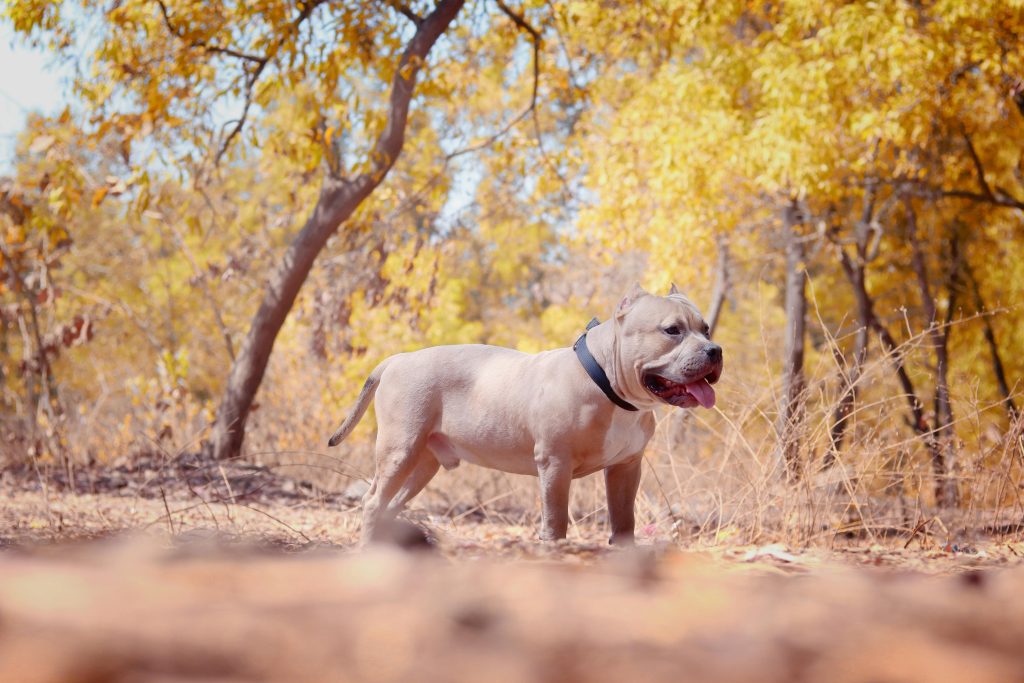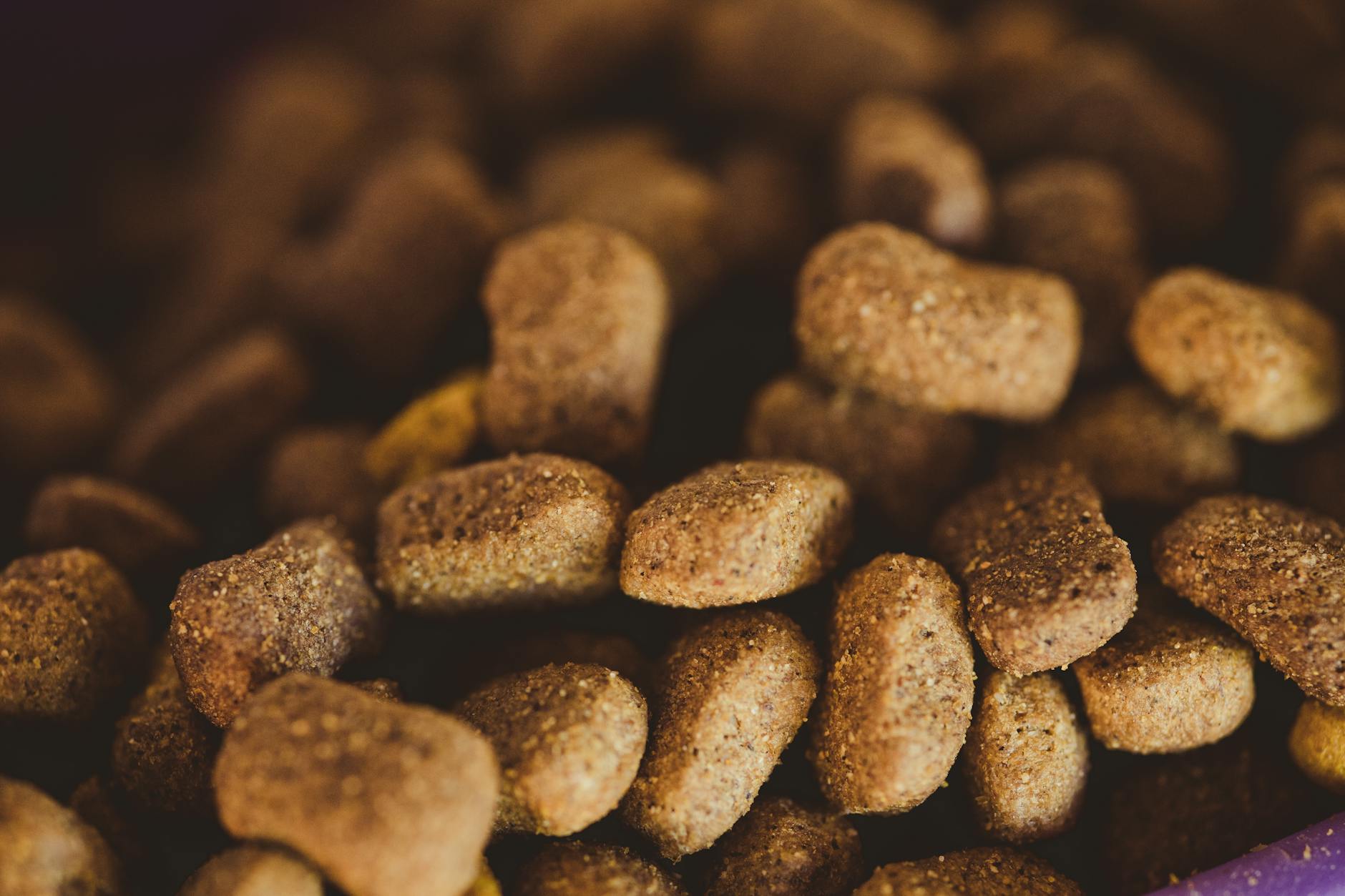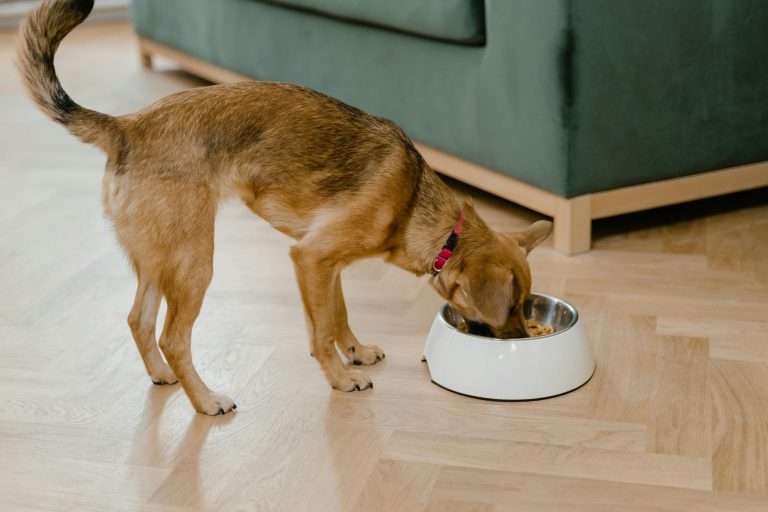Dog Nutrition Advice for American Bullie Puppies: Essential Tips for Healthy Growth

Dog Nutrition Advice for American Bullie Puppies: Essential Tips for Healthy Growth. Raising American Bullie puppies means paying close attention to their unique nutritional needs.
This breed grows quickly and experiences important milestones early in life, so what goes in its bowl directly shapes its health and development.
Feeding them just any puppy food doesn’t give them the balanced fuel they need for strong bones, shiny coats, and healthy muscles.
In this post, I’ll break down must-know dog nutrition advice for American Bullies puppies and share tips you can trust. You’ll learn how to give your Bully the best start for a happy, energetic life.
Table of Contents
Key Takeaways
Regarding dog nutrition advice for American Bullies puppies, a few core principles make all the difference in your pup’s health. The proper nutrition can give your Bully a strong start and support their fast-growing bodies.
Below, I’ve broken down the most essential points to remember as you feed and care for your Bully puppy.
 Photo by MART PRODUCTION
Photo by MART PRODUCTION
Prioritize Balanced Nutrition
Making sure your American Bully puppy gets a balance of protein, fat, and carbs is the foundation for steady growth. Look for foods that provide:
- 25-30% protein content: Protein helps build strong muscles and supports rapid development.
- 15-20% fat content: Healthy fats are key for energy and shiny coats.
- Complex carbohydrates: These deliver steady fuel and support healthy digestion.
Keeping proportions in check can help your puppy avoid common health problems. For a detailed breakdown, see this essential diet and exercise resource for American Bullies.
Feed for Growth, Not Just Size
American Bullies put on weight fast, but not all calories are equal. Choose nutrition that fuels growth without leading to excess body fat. Puppies thrive on recipes made for large, athletic breeds. High-quality puppy food supports developing joints, bones, and organs.
Refer to this Puppy Nutrition Guide for tips that can help you pick the best food for your growing pup.
Monitor Portions and Keep a Schedule
It’s easy to overfeed a chunky puppy with big eyes. Structure helps. Feed your American Bully puppy:
- 3-4 times a day: Small, consistent meals prevent upset stomachs and help steady growth.
- According to weight and age: Check the feeding chart on your dog food or consult your vet.
Giving too much food at once can lead to tummy problems and uneven weight gain.
Watch for Food Sensitivities
Not every puppy’s stomach can handle the same formula. Look for signs like itchy skin, loose stools, or low appetite. Consider rotating protein sources or choosing a limited-ingredient recipe if these pop up.
More on how to time meals and pick the right ingredients can be found at When & How Much to Feed an American Bully Puppy.
Stay Consistent but Stay Flexible
Life with puppies is rarely predictable. If your American Bully grows faster than expected (or hesitates at meal time), be willing to adapt their diet. Sometimes, what works for one Bully won’t work for another. Trust your observations—and your vet’s advice—as much as the feeding chart.
Following these points will give your American Bully puppy a solid start, fewer health troubles, and more energy for those crazy, tail-wagging days.
Understanding the Nutritional Needs of American Bullie Puppies
American Bullies puppies don’t just grow—they transform. Their rapid growth patterns are unique, leading to dense muscle and bone development early in life. It’s why dog nutrition advice for American Bullies puppies must focus more than just filling their bowls.
Every meal must deliver precise nutrients that help these playful powerhouses thrive, not just survive. Getting the balance right sets the foundation for a strong, athletic adult Bully, with fewer risks for joint issues, allergies, or poor coat health down the road.
Key Macronutrients: Protein, Fat, and Carbohydrates
American Bullie puppies are all about muscle, meaning high-quality protein is essential. It’s not just about building bulk—protein supports everything from tissue repair to the healthy development of organs and the immune system. I always check for puppy foods that list real meat (like chicken or beef) as the first ingredient.
- Protein: Look for foods that offer at least 25-30% protein. This helps Bully pups gain healthy muscle, not extra body fat.
- Fat: Fat acts as the fuel tank for these active pups. Aim for foods with moderate, healthy fat (around 15-20%), which gives them the energy to play and helps reflect their natural shine with a glossy coat.
- Carbohydrates: While not the show’s star, carbs hold their own by providing energy and helping digestion. I reach for formulas filled with sweet potatoes, brown rice, or other complex carbs that offer vitamins and steady energy, not just empty calories.
Attention to the big three (protein, fat, and carbs) will help avoid shortfalls that can slow growth or leave puppies restless and hungry. The guide on Your Puppy’s Diet & Nutritional Needs offers reliable advice for a deeper look at what goes into a solid puppy diet.

Photo by Nattaphat Phau
Essential Vitamins and Minerals for Healthy Growth
Strong bones and an athlete’s frame—these are what set Bully puppies apart. But building that foundation goes way beyond macronutrients. Essential vitamins and minerals play a starring role:
- Calcium and Phosphorus: These two minerals construct solid bones and teeth. Balancing the ratio is critical; too much or too little can lead to growth problems or weak joints. A safe, controlled calcium-to-phosphorus ratio is key.
- Omega-3 Fatty Acids: In fish oils and flaxseed, omega-3s support healthy brain and eye development, decrease inflammation, and promote heart health. They also give American Bullies their eye-catching, shiny coats.
- Vitamins A, D, and E: Vitamin A supports vision and immune function. Vitamin D helps their bodies use calcium and phosphorus efficiently. Vitamin E acts as an antioxidant, keeping cells healthy during rapid growth.
Supplements aren’t always necessary—most high-quality puppy foods deliver what’s needed. Always check the ingredient list and guaranteed analysis label to make sure these nutrients are represented in the right amounts. Balanced nutrition is the best medicine in these early months. For step-by-step feeding plans and deep dives on growth-stage nutrients, check out the advice at Feeding Growing Puppies.
Understanding these nutritional requirements helps eliminate the guesswork of choosing the proper puppy diet. For further help on breed-specific needs and meal plans, you can see more resources in my post about Facts About Akita Dogs—it offers valuable insights that apply to athletic breeds like the American Bully, too.
Selecting the Best Diet for Your American Bullie Puppy
Choosing what to feed American Bullie puppies can feel overwhelming, especially with many options lining the shelves. The goal is simple: pick a diet that fuels steady growth, keeps them healthy, and makes feeding as stress-free as possible.
Here’s what you need to know about the different feeding options and tips on reading labels to know exactly what’s in every bowl.
Commercial vs. Homemade Diets: What’s Best?
 Photo by MART PRODUCTION
Photo by MART PRODUCTION
Commercial and homemade diets have strong points and some serious trade-offs.
Commercial Diets
Most American Bullie puppies thrive on high-quality commercial puppy foods, whether kibble, canned (wet food), or a mix. Here’s why:
- Nutritional Balance: These diets undergo rigorous testing to deliver complete nutrition for growing puppies, especially those formulated for large breeds.
- Convenience: No need to worry about preparing meals from scratch or risking an incomplete diet.
- Safety: Big brands follow standards set by experts, so you’re less likely to miss key nutrients.
Within commercial diets, I always recommend looking for formulas labeled “for large breed puppies.” That ensures your puppy gets the right balance of minerals for joint, muscle, and bone health. You can read more on why large breed formulas matter in this AKC guide on what to feed your puppy based on their breed.
Homemade Diets
Some pet owners enjoy creating homemade dog meals. This option means total control over ingredients but comes with real risks:
- Nutritional Gaps: Even well-meaning recipes can lack crucial nutrients like calcium, phosphorus, and specific vitamins.
- Time-Consuming: Preparing meals for a fast-growing puppy gets tricky and takes extra planning.
- Risk of Imbalance: Creating balanced meals can be challenging without veterinary guidance.
If you ever go the homemade route, work closely with a vet or canine nutritionist. A nutrition misstep at this age can long-term affect your Bully’s growth.
Interpreting Dog Food Labels for Puppies
Dog food labels can seem like a foreign language, but knowing what to look for can make you a smarter shopper.
Key Things to Check:
- Ingredient List: Ingredients are listed by weight. Look for real animal proteins (“chicken,” “beef,” “salmon”) in the top spots. Watch out for fillers—avoid formulas where corn, meat by-products, or vague “meat meals” dominate the list.
- Guaranteed Analysis: This panel shows minimum protein and fat levels and maximum fiber and moisture. For American Bullies puppies, check that protein is at least 25% and fat is around 15% or more.
- Nutritional Adequacy Statement: Look for lines like “formulated to meet the nutritional levels established by the AAFCO Dog Food Nutrient Profiles for Growth.” This is your sign that the food is for puppies, not adults.
When searching for the best food, don’t just choose based on marketing claims on the bag. Give preference to brands that show research, quality assurance, and clear transparency in sourcing. For more practical tips on picking out top-notch puppy food, see this helpful article on choosing the best dog food.
Bonus Tip:
There are many food options—raw, kibble, and wet. Each has strengths:
- Kibble: Affordable, convenient, stores well.
- Wet Food: Tasty, easy to chew, hydrating.
- Raw Diets: Some breeders prefer raw for coat and muscle, but always check safety and balance with your vet.
Stay consistent with the food you pick, and change slowly if needed to reduce tummy upsets. Also, choosing the right portion size matters as much as choosing the food itself—a lesson that works for any breed, as you’ll see in guides like Are Dachshunds Good Dogs? that touch on portion control and breed-specific needs.
Making informed choices about your American Bullies puppy’s diet means fewer worries and a stronger, happier pup in the long run.
Establishing a Healthy Feeding Schedule
A healthy feeding schedule helps your American Bullies puppy thrive and reduces the risk of unhealthy weight gain or growth issues. Young pups depend on routine. Their bodies grow fast and need regular fuel, but how you space out meals matters as much as what goes in the bowl. Consistency keeps digestion smooth and energy even, while proper portions prevent stress on growing joints.
Transitioning Food Safely as Your Puppy Grows
 Photo by cottonbro studio
Photo by cottonbro studio
American Bullie puppies may need to switch foods as they pass milestones—moving from breeder’s food to puppy formula, then onto adult food. Switching food too quickly can lead to upset stomachs, loose stools, or even refusal to eat. I make changes slowly to help my puppy’s gut adjust:
- Mix 75% of the current and 25% of the new food for 2-3 days.
- Mix half and half for another 2-3 days.
- Gradually shift to 75% new food and 25% old for another 2–3 days.
- Finish with 100% new food.
I always check for signs of discomfort like diarrhea, vomiting, or itching. If issues show up, I slow down the switch. American Bullies are sensitive to new recipes and ingredients, so patience is key. When advancing to adult food, time this change around twelve to eighteen months, based on your dog’s final size and the brand’s recommendations.
This dog food for allergies resource offers advice for puppies with food sensitivities, information about limited-ingredient diets, and special transition protocols.
Meal Frequency & Portion Sizes
Puppies need several small meals, not just one or two large feedings. Overfilling a puppy’s belly can stress digestion and bones, especially in athletic breeds like the American Bully. Here’s what works best by age:
- 8–12 weeks old: Feed four times daily. Small, even portions keep blood sugar steady.
- 3–6 months: Drop to three feedings each day. Watch weight gain and adjust portions to prevent pudginess.
- 6–12 months: Most can move to two meals a day. Continue to monitor their shape—ribs should be easy to feel, but not visible.
I use the feeding chart on the puppy food as a guide for proper portions, and adjust based on activity level and growth. American Bullies can quickly become overweight if given too much food, which strains bones and joints. When in doubt, check their shape from above—you want a gentle waist, not a barrel.
Consistency in both portions and feeding times builds trust in your puppy. It tells them when to expect meals and reduces begging, accidents, and tummy upset.
See the post about dog feeding basics for more help with puppy meal schedules. It includes a handy feeding guide.
Intense routines plus slow transitions will help your American Bullies puppy grow healthy and confident, with fewer bumps along the way.
Common Feeding Mistakes to Avoid
Feeding American Bullies puppies is more than filling a bowl and watching them devour it. Their nutrition shapes their whole future, so it’s all too easy to make mistakes that can impact growth and well-being.
Many owners slip up by giving extra treats, table scraps, or not measuring portions, thinking they’re showing love. Though often unintentional, these missteps can risk a puppy’s health. Let’s break down the most frequent feeding mistakes and how to avoid them.

Photo by Makarand Sawant
Overfeeding and Underfeeding
American Bullies grow fast, and it can feel like they’re always hungry. But feeding them too much—even healthy food—adds stress to bones and joints, leading to weight problems and long-term issues.
Conversely, underfeeding, such as not sticking to a regular schedule or serving too-small portions, deprives puppies of crucial nutrients, leaving them tired or underdeveloped.
Watch for these pitfalls:
- Free-feeding or leaving food out all day.
- Ignoring the serving size on the food label.
- Frequent giving of treats, chews, or human food.
- Skipping meals due to busy routines.
Consistent, portion-controlled meals keep growth on track. If you’re unsure about the right amounts, most high-quality puppy food brands offer feeding guides, and your vet can help you tailor these for your dog’s breed and activity level. You can learn more about dog feeding mistakes at this common feeding mistakes resource.
Feeding Inappropriate Scraps
Giving puppies table scraps or fatty leftovers is tempting, especially when they give you those eyes. But many human foods are too rich, salty, or contain ingredients that are toxic to dogs. Stuff like cooked bones, onions, garlic, grapes, and chocolate can cause serious harm.
Stick to a diet designed for puppies to give balanced nutrition every time. If you want to offer treats, choose puppy-appropriate snacks or healthy, single-ingredient options like a slice of cooked sweet potato or carrot.
Not Monitoring Weight and Body Condition
An American Bully puppy shouldn’t look chubby or thin. Overweight puppies face an increased risk of joint disorders, and underweight pups can lag in growth. Visual checks and monthly weigh-ins can help you catch changes early.
Keep an eye on:
- A waist when viewed from above.
- Ribs are easy to feel, but not sticking out.
- Steady, predictable weight gain on a growth chart.
It’s helpful to set a reminder to review your puppy’s body condition monthly. If you notice significant changes—either gaining too fast or looking bony—it’s time to tweak portions or seek your vet’s advice.
How portion control helps other breeds, like the Boston Terrier, can also give practical feeding ideas you might borrow for your Bully.
Skipping Routine and Lack of Consistency
Changing brands, feeding times, or types of food too often can cause digestive upset and confusion. Puppies thrive on structure, just like kids. A set meal routine supports digestion, reduces stress, and helps with house training.
If your schedule changes, adjust gradually and keep meals predictable. Mix new food slowly with the old to help your puppy’s stomach adjust—a principle also stressed in resources on Boxer dog feeding.
Recognizing Signs of Nutritional Deficiencies: List common red flags and when to consult a vet.
Getting dog nutrition advice for American Bullies puppies right means watching for warning signs that something’s missing. Even small mistakes in their diet can show up as significant changes in mood, coat, or growth. Notice these in your pup? They could signal a nutritional gap that needs attention.
Common Red Flags:
- Dull, dry, or flaky coat: Healthy puppies sport smooth, shiny coats. Poor nutrition often shows up as lackluster fur or excessive shedding.
- Slow or stunted growth: Puppies that lag in size or muscle may need more calories, protein, or key minerals.
- Frequent digestive upset: Recurring diarrhea, vomiting, or loose stool can indicate food intolerance or diet imbalance.
- Low energy or listlessness: Pups should be lively. Persistent tiredness or weakness often signals anemia, low calories, or missing nutrients.
- Skin problems: Persistent scratching, redness, or infections can reflect lack of essential fatty acids, zinc, or vitamins.
- Poor immune health: Repeated illness or slow-healing wounds may suggest a vitamin or mineral deficiency.
If you spot any of these issues, reassess what you’re feeding and check portion sizes. If fed correctly, puppy-specific diets usually meet all needs, but consult your vet to rule out illness or underlying problems. Puppies can deteriorate quickly, so don’t wait long to seek professional advice.
For a more thorough look at common puppy feeding mistakes, this guide on common feeding mistakes with puppies gives extra detail and practical advice.
Getting dog nutrition advice for American Bullies puppies right avoids most problems, but monitoring and quick action keep your pup on a healthy path.
Supporting Lifelong Health Beyond Puppyhood
Feeding American Bullies puppies is only the beginning. As these athletic dogs grow past the wobbly puppy stage, their nutrition and care must also grow with them.
Paying attention to changing needs ensures lifelong health, keeps their muscles lean, and helps them stay energetic well into adulthood. The journey doesn’t stop after puppyhood—it’s an ongoing commitment to watching their diet, body condition, and overall well-being.
 Photo by Tima Miroshnichenko
Photo by Tima Miroshnichenko
Reassessing Your Dog’s Diet as They Age
American Bullies move from puppy food to adult formulas around 12 to 18 months, depending on their growth rate. Sticking with a puppy diet too long can put your Bully at risk for unwanted weight gain and joint problems.
When adult life begins, I review the calories, protein, and fat content, ensuring it matches their activity and metabolism.
If my dog seems sluggish or starts gaining weight, I look at the type of food and the amount it eats. Sometimes, a smaller portion or a shift to a “light” or “weight management” formula does the trick. Seasonal needs also matter—active summer days may need more calories, while cold months indoors call for fewer treats.
Switching to adult food or adjusting formulas should happen slowly. A gradual change avoids stomach upset, like transitioning food during the puppy months.
For details on managing portion sizes and maintaining a healthy routine, see advice on dog feeding basics, which covers meal size and feeding rhythm for older dogs.
Ongoing Weight Management
A fit Bully is easier to care for and less likely to develop heart or joint problems. Energy levels can drop as they age, but appetite may change. I use these habits to help my dog avoid extra weight:
- Weigh regularly, at least once a month.
- Check for ribs under a thin layer of fat and ensure the waist tucks in when viewed from above.
- Sticking to meal routines, even when things get busy.
When I notice my weight creeping up, I cut back on treats, swap for lower-calorie rewards, and add extra walks or play. Structured routines help everyone in the family stay on track, and keeping these habits simple makes them more likely to stick.
If you need help structuring routines as your dog matures, check out tips in our post about building healthy habits for dogs, which discusses feeding, discipline, and consistency for all ages.
Routine Vet Checks and Ongoing Health Screens
Annual wellness exams help spot issues early—before they become big (or expensive) problems. At the vet visit, I talk about my Bully’s diet and recent weight changes, and get clarity on any supplements that might support their needs.
These appointments also provide an expert check on teeth, joints, and coats, directly related to good nutrition.
If my vet flags rising weight or warns of tartar on teeth, I immediately use their advice to tweak food and routines. Open communication with your vet is as important for adults as for puppies.
Vet checks also help me stay alert to food allergies, dental needs, or changing sensitivities that sometimes pop up in early adulthood.
It’s never a waste of time—think of a yearly checkup as refueling with advice and peace of mind.
Encouragement for the Ongoing Nutrition Journey
Supporting lifelong health for American Bullies means planning for change. Growth, seasons, and age all shape nutrition needs.
Reassessing food, watching weight, and getting regular vet guidance lays the groundwork for a thriving, playful companion.
Keeping nutrition a daily focus sets these powerful pups up for energy, health, and happiness at every stage of life.
If you’re eager to level your care, find more advice and trusted resources in other breed-specific nutrition guides, like our post on the top 10 healthiest dog breeds.
Each step you take today is toward a long, wag-filled future with your American Bully.
Frequently Asked Questions About Dog Nutrition Advice for American Bullie Puppies
Raising an American Bullie puppy raises many questions—how much to feed, what to include, and how to spot issues before they start.
In this section, I’ll answer the most common questions I hear from new Bully owners, taking the guesswork out of daily care and setting your puppy up for a lifetime of healthy habits.
 Photo by Rafael Rodrigues
Photo by Rafael Rodrigues
How Much Should I Feed My American Bullie Puppy?
The right amount depends on age, weight, activity level, and the specific food you use. As a rule of thumb:
- At 8–12 weeks, feed about 1 cup per meal, four times daily.
- By 3–6 months, serve 1 to 1.5 cups, three times daily.
- At 6–12 months, most puppies need two meals daily, adjusting cup size as they grow.
Always use your puppy food’s feeding chart as a guide, monitor your pup’s shape (you want to feel ribs but not see them), and adjust portions if your puppy looks too plump or thin.
For more information on meal frequency and portion control, this step-by-step guide on when and how much to feed an American bully puppy provides practical tips for every stage.
What Ingredients Are Most Important in Their Diet?
Quality protein (meat as the first ingredient), healthy fats, complex carbohydrates (like sweet potatoes or brown rice), and balanced minerals are the top priorities.
Omega-3s support the coat and brain, while the right calcium and phosphorus ratio helps strong bones. I avoid foods with generic meat by-products or excessive fillers. For a deeper dive, check out this essential diet and exercise advice for American Bullies.
Can I Prepare Homemade Meals or Should I Stick With Commercial Food?
Both are options, but most owners find high-quality commercial foods safer and more convenient, especially for fast-growing breeds like the American Bully.
Homemade diets work only when planned by a vet or canine nutritionist, so your puppy doesn’t miss key nutrients.
Missing even a single essential vitamin or mineral can affect growth, so I recommend starting with a complete, balanced commercial formula unless you’ve done your homework or have expert guidance.
How Do I Know If My Puppy Has a Food Allergy or Intolerance?
Signs of food intolerance or allergy often appear as:
- Itchy skin or excessive scratching
- Red paws or ears
- Chronic diarrhea or vomiting
- Low appetite
If you notice these, talk with your vet to rule out other health issues, then try a limited-ingredient diet or new protein source. Mild symptoms might resolve with a food change, but strong reactions always call for a vet visit.
When Should I Switch My Puppy From Puppy Food to Adult Food?
American Bullies typically move to adult food at 12–18 months, but this depends on growth and your specific brand’s recommendations. The switch should be gradual, over 7–10 days, to avoid upset stomachs.
Keep an eye on your pup’s muscle tone and weight—these will let you know if the timing is right. For more insight into smooth transitions and nutrition past the puppy stage, the advice in my post on healthy eating habits for dogs can help you plan.
What Kinds of Treats Are Safe for American Bullie Puppies?
The best treats are low-fat, single-ingredient treats like carrots, apple slices (no seeds), or store-bought puppy treats.
Avoid anything with a lot of sugar, salt, or artificial colors, and never give chocolate, grapes, or onions, which are toxic. Treats should make up less than 10% of daily calories to prevent weight gain.
How Often Should I Adjust My Puppy’s Diet?
Adjust the diet every couple of months based on growth, changes in activity, or any signs of sensitivities.
Always measure portions and check their body condition monthly. Rapid weight gain, sudden inactivity, or poor coat may signal it’s time for a change.
For extra support on creating a feeding plan and monitoring your Bully’s nutrition, you’ll find even more helpful info in my roundup on the healthiest dog breeds and their diet needs. Keeping up with your puppy’s needs today pays off for years.
Conclusion
Raising a healthy American Bully puppy starts with making the right choices at mealtime.
Tailored dog nutrition advice for American Bullies puppies helps you avoid common pitfalls, support steady growth, and set the stage for a strong adult dog.
When you use the tips in this guide and pay attention to your puppy’s body and energy, you give them the best shot at lifelong health.
Every dog is unique, and your daily routines make a huge difference. Use trusted resources like the comprehensive feeding basics guide for extra support in building healthy habits.
As you watch your Bully grow, keep learning, stay consistent, and don’t hesitate to share your experiences or ask questions.
Thank you for letting me be part of your puppy’s nutrition journey—healthy meals today mean more tail wags tomorrow.






